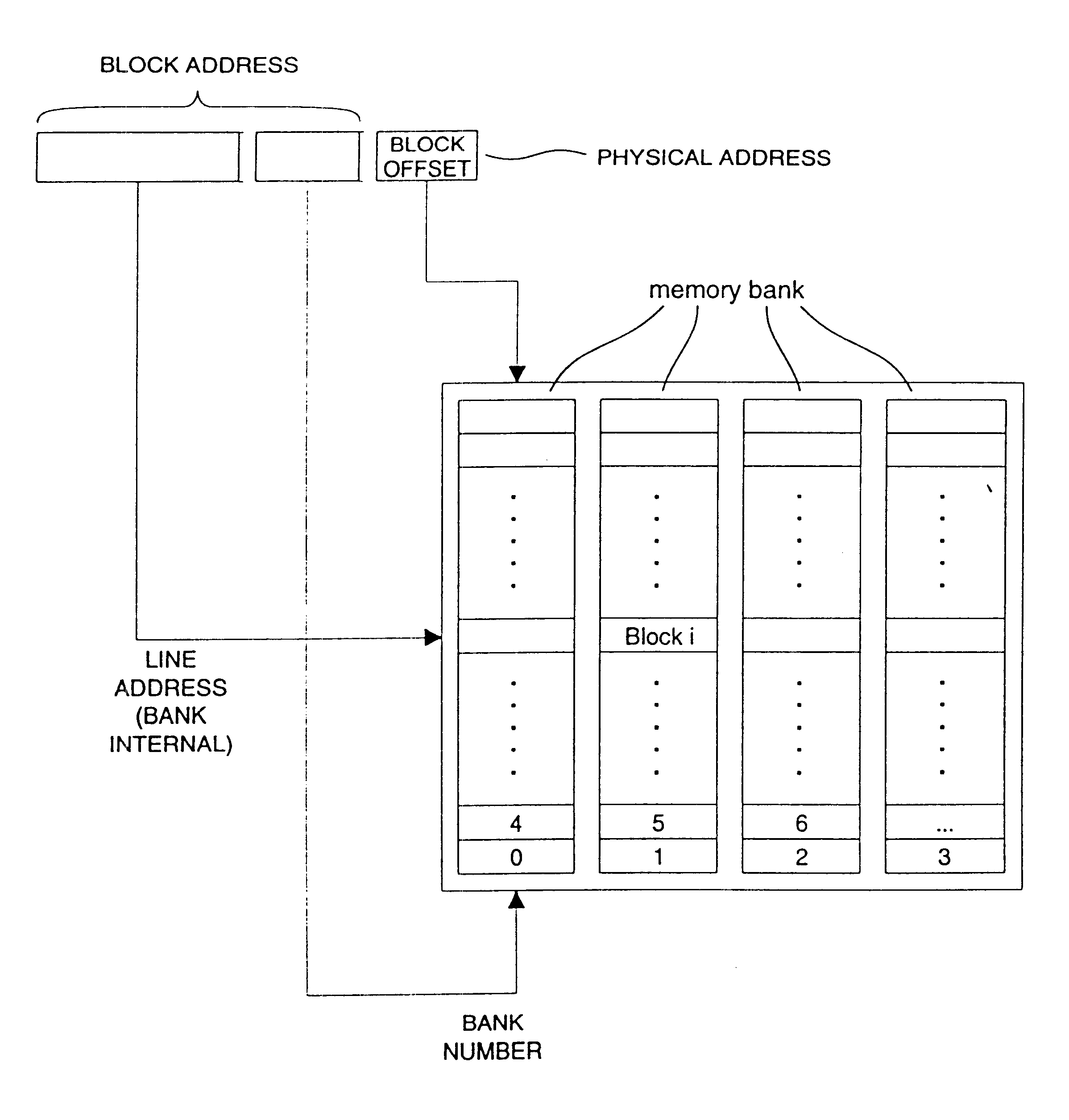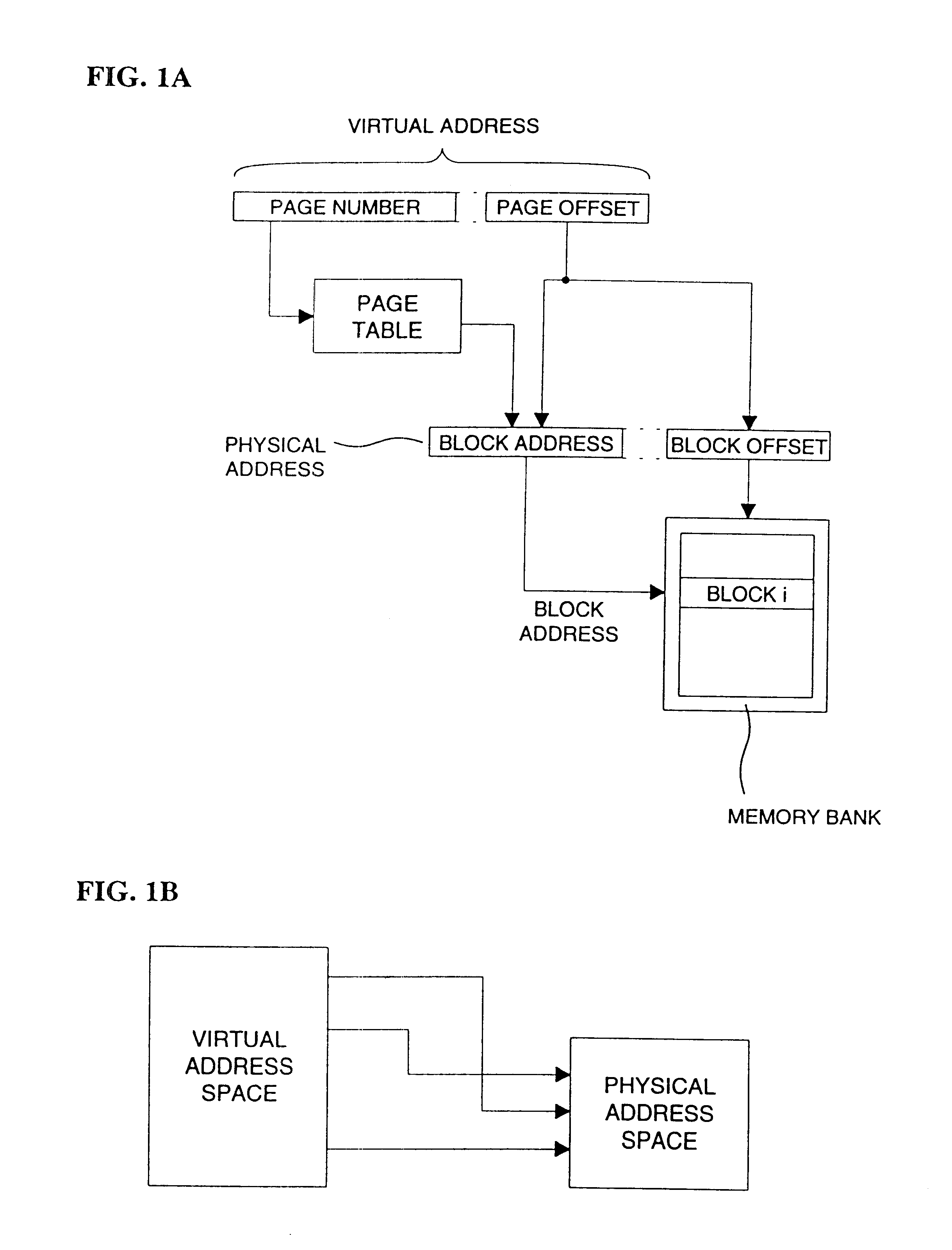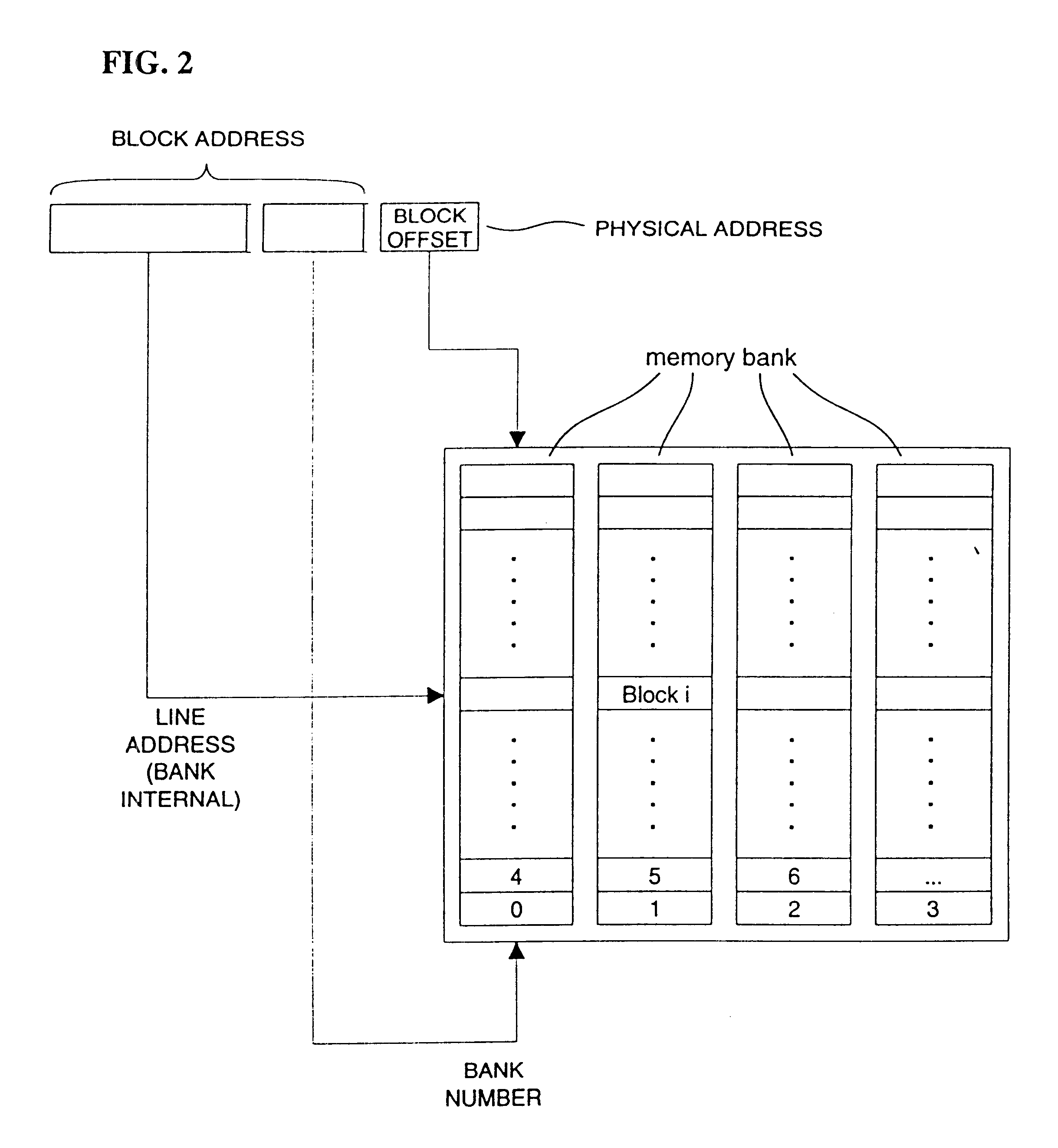Address mapping for system memory
a technology of address mapping and system memory, applied in the direction of memory address/allocation/relocation, instruments, computing, etc., can solve the problems of large memory latencies, short period of time, and inability to freely select the interleave which can be achieved
- Summary
- Abstract
- Description
- Claims
- Application Information
AI Technical Summary
Benefits of technology
Problems solved by technology
Method used
Image
Examples
Embodiment Construction
(a) General Facts:
The bank number in which a given address is mapped, is obtained by performing a lookup operation using the X and Y portions taken from the address as index for the lookup table.
The least significant bit of the X portion is at bit position p.sub.0. Addresses that have a difference equal to 2.sup.p0 have the same Y value and consecutive X values. The column in the LUT corresponding to this Y value determines how addresses with consecutive X values are mapped over the memory banks and therefore, the interleave factor for an address sequence with a stride equal to 2.sup.p0.
In a similar way, addresses that have a difference equal to 2.sup.q0 have the same X value and consecutive Y values, where q.sub.0 is the bit position of the least significant bit of the Y portion. The row in the LUT corresponding to this X value determines how addresses with consecutive Y values are mapped over the memory banks, and therefore, the interleave factor for an address sequence with a str...
PUM
 Login to View More
Login to View More Abstract
Description
Claims
Application Information
 Login to View More
Login to View More - R&D
- Intellectual Property
- Life Sciences
- Materials
- Tech Scout
- Unparalleled Data Quality
- Higher Quality Content
- 60% Fewer Hallucinations
Browse by: Latest US Patents, China's latest patents, Technical Efficacy Thesaurus, Application Domain, Technology Topic, Popular Technical Reports.
© 2025 PatSnap. All rights reserved.Legal|Privacy policy|Modern Slavery Act Transparency Statement|Sitemap|About US| Contact US: help@patsnap.com



